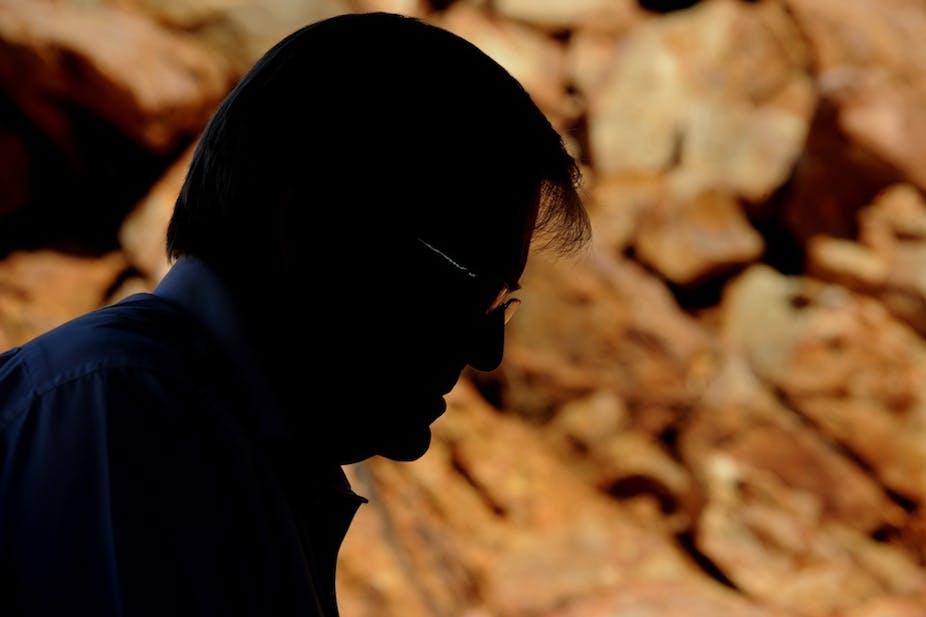On a flying visit to Darwin yesterday, Prime Minister Rudd proposed a new initiative “Growing the North: A Plan for Northern Australia”. The Opposition, particularly local Country Liberal politicians, quickly derided the plan as a vote-chasing “thought bubble”, while most electors in northern electorates in Queensland, Western Australia and the Northern Territory would have seen it as another set of promises that would never be realised.
Putting aside cynicism about the political timing of the “Plan”, it does say a lot about how visions for northern development resonate among Australians not resident in the region. We are still seeing northern versions of the Bradfield Scheme articulated in the “dam the north” rhetoric of prominent conservative politicians. Senator Bill Heffernan has long championed the damming of the north’s rivers and the creation of an Australia food bowl, as have the ilk of the Katter Party and other agrarian socialists. The putative Finance Minister Andrew Robb, who should have more economic nous, has also pushed for more dams. The Rudd “Plan” is a lite version of the traditional “Northern Vision”.
Rudd proposed a three-point plan:
-
Create a northern Special Economic Zone. This element has all the usual suspects - “simplifying” investment rules and “streamlining” regulation for major projects. The lower company tax rates for firms located in the north would be a rorters’ (and Gina Rinehart’s) delight. It could stimulate a goldrush towards a Bahamas-style head office post-box location shift to Darwin. Australia Post, at least, would benefit by the sale of extra post boxes.
Expand stage three of the Ord Irrigation Scheme. Ten million dollars, the only actual money in Rudd’s Plan, was allocated here. Presumably the WA and NT governments will stump up the other $140 million so that we can continue the losses (in economic opportunity costs) that the Ord has generated over the past 50 years.
Twenty-year growth plans for regional hubs in Darwin, Townsville, Cairns and Mackay.
The last proposal makes sense if the plans are drawn up with appropriate consultation and research. These plans nominate sensible targets. For example, Cairns is to be a tourist hub and Mackay a services hub for the coal industries of the Bowen and Galilee Basins. Darwin is to focus on natural resources and defence (as well as agribusiness, engineering, and financial, medical and educational services in which it is at a cost disadvantage). Most of this reflects the current reality of how markets and geography have driven these cities’ economies.
Of course, we have had these plans before. Under the Keating Government, the Commonwealth drew up the Wran Report, an expensive exegesis on how to develop Darwin (much of which is summarised by the Rudd Plan’s points one and three). The report was published but nothing happened.
One aspect of the report illustrates how the Commonwealth alienates even while it claims to consult. The Rudd “Plan” proposes to lower government charges by reducing stamp duty and insurance costs and “harmonising” payroll taxes. These three sets of imposts are state taxes, so the Commonwealth is hardly starting “consultation” off on a sound footing. The Northern Territory levies the lowest rates of payroll tax in Australia, so Territory taxes would be “harmonised” up? That’s a good start for making Darwin a services hub.
These witty points are not intended to amuse, merely to suggest that the Commonwealth is a poor fount of knowledge about the north and its communities.
Notably absent from the “northern development” hubbub is any considered Indigenous voice. Aboriginal people have even better reason to be sceptical about Australia’s real (as opposed to rhetorical) commitment to their development. Over the past decade or so, the Indigenous Land Corporation has spent about $650 million acquiring cattle properties to put Aboriginal people into an industry they love and which relates to their way of being on their land. Yet, two years ago, in response to a moral panic in the leafy suburbs of Sydney and Melbourne, the region’s exports of live cattle to Indonesia were cancelled overnight. The damage has still not been recovered.
Similarly, the Coalition promises to end the carbon tax if they win the election. Yet this tax provides an opportunity for Aboriginal people in northern Australia to secure revenues from their country through carbon farming via their traditional burning practices. Again we see a policy pitched at southern electors on a national basis, but with northern Aboriginal communities as the collateral damage. Similarly, large marine parks and reserves across the north delight southern conservationists but imperil sustainable northern fisheries.
Finally, I can only reiterate what Andrew Campbell and Jim Turnour argued recently. We need a smarter debate on developing northern Australia. Australians also need to understand that nostrums that may apply elsewhere, may not apply for northern Australia’s unique resource-environment mix. Even more importantly, we need a bipartisan conversation. This should have a common understanding of the constraints, as well as the opportunities. We are dealing with very long timescales, both to “develop” the north and to agree on what “develop” means in the context of this singular region.

